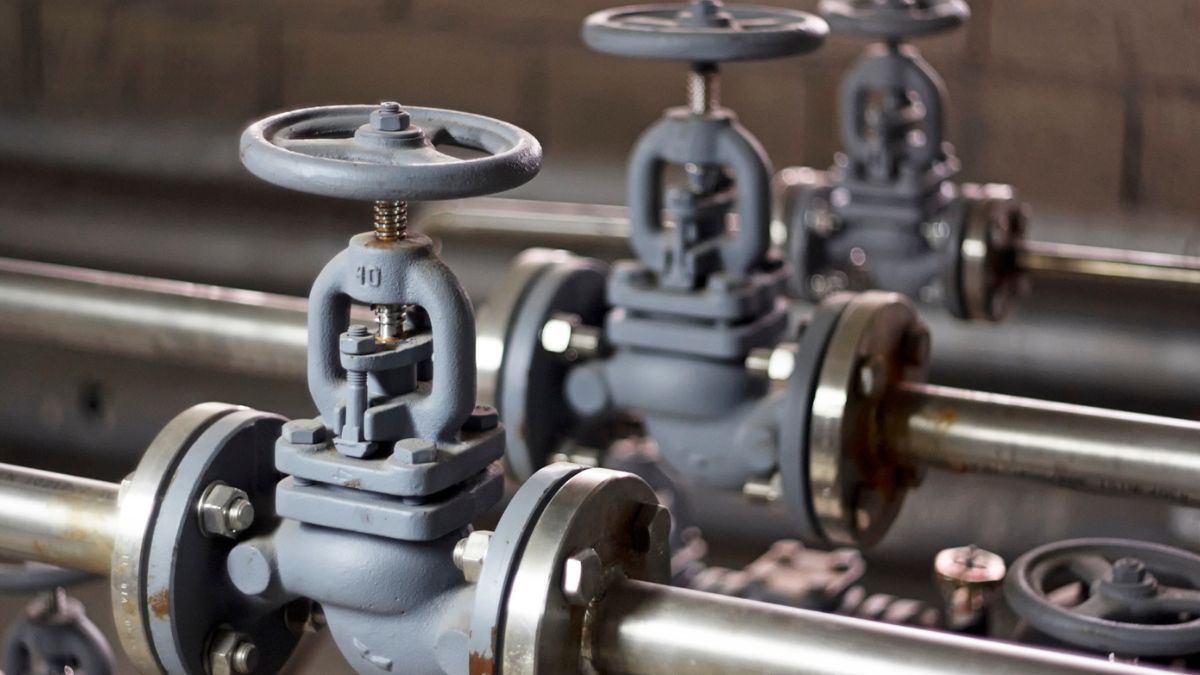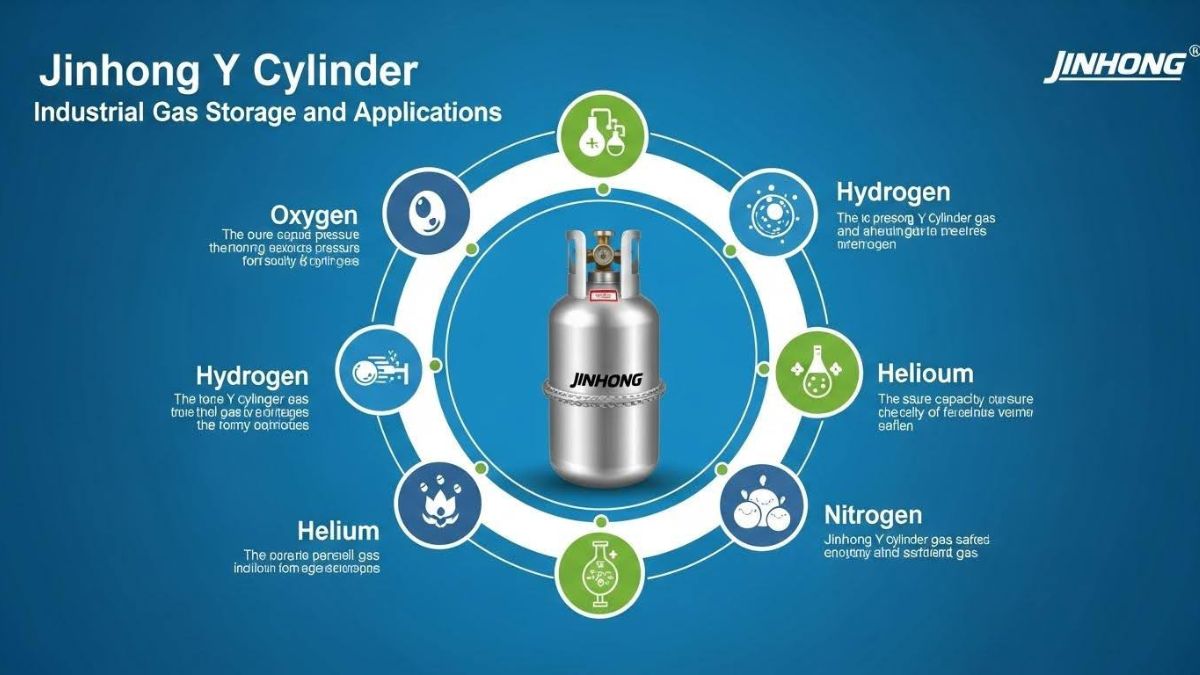TOPIC
Understanding the Different Types of Valves: A Comprehensive Guide

Valves are critical components across numerous industries, playing an essential role in controlling the flow of liquids, gases, and other materials. Whether you’re a homeowner looking to fix a leak, an engineer selecting the right components for a project, or a cyclist interested in the nuances of bike tire valves, understanding the types of valves available can make a significant difference in performance and safety. In this comprehensive guide, we will explore the various different types of valves, delve into specific applications such as bike tire valves, and provide tips on selecting and maintaining the right type of valves for your needs.
What Is a Valve?
A valve is a device that regulates, directs, or controls the flow of a fluid by opening, closing, or partially obstructing passageways. They are found in almost every industry, from water supply and sewage systems to the automotive and aerospace sectors. The performance and longevity of a system often depend on choosing the appropriate types of valves, as different designs and materials offer unique advantages.
Valves come in a wide variety of forms, each designed to serve specific functions. Understanding these variations not only helps in making an informed purchase but also ensures correct installation and maintenance for optimal performance. This article will cover general valve types and then focus on niche areas, such as bike tire valves, highlighting specific considerations for each.
Common Types of Valves in Various Industries
Across different sectors, valves vary greatly in design and function. Some are designed for high-pressure steam, while others handle delicate gas flows. They can be as simple as a manual tap or as complex as an automated valve integrated into a digital control system. Let’s examine some of the common different types of valves used across industries.
General Valve Classifications
Valves are often classified based on their method of operation, design, or application. These classifications include:
- Manual Valves: Operated by hand, often using a wheel or lever.
- Automated Valves: Controlled remotely or automatically using actuators and sensors.
- Flow Control Valves: Specifically designed to regulate flow rates.
- Isolation Valves: Designed to stop flow completely when needed.
Additionally, valves may be designed for special environments, such as high temperatures, corrosive materials, or hygienic conditions in food processing.
Specific Valve Designs
Among the many types of valves available, some of the most common designs include:
Ball Valve: Uses a spherical disc to control flow. Easy to operate, durable, and widely used in industrial applications.
Gate Valve: Uses a sliding gate to stop or allow flow. Excellent for on/off control but not ideal for regulating flow.
Globe Valve: Suitable for regulating flow due to its linear motion that throttles fluid.
Check Valve: Allows fluid to flow in only one direction, preventing backflow.
Butterfly Valve: Features a rotating disc to control flow, often used where space and weight are considerations.
These common designs form the backbone of fluid control across numerous applications. Each type of valve has distinct advantages and limitations, making them suitable for specific tasks. For instance, while a ball valve offers a quick shut-off function, a globe valve provides more precise flow control, a critical factor in many industrial processes.
Exploring the Features of a Good Valve
Selecting the right valve requires an understanding of its features and capabilities. Depending on the application, factors such as material, durability, pressure rating, and compatibility with the media (water, gas, oil, etc.) are crucial. High-quality valves must be robust, reliable, and efficient.
Key Features to Consider:
- Material Quality: The material must withstand environmental stresses like corrosion, high pressure, or extreme temperatures.
- Sealing Mechanisms: Prevent leaks and ensure longevity.
- Ease of Operation: Simple designs that allow quick operation and maintenance.
- Compatibility: Suitable for the type of fluid and specific application demands.
These features ensure that the valve operates safely and efficiently, minimizing downtime and maintenance costs.
Different Types of Valves in Action
When discussing different types of valves, it’s essential to look at how they operate in various contexts:
Industrial and Residential Applications
Industrial Valves: Used in plants, refineries, and large-scale plumbing to regulate high-pressure fluids, hazardous chemicals, or gases. These valves often incorporate advanced materials and designs to cope with demanding environments.
Residential Valves: Found in water supply lines, gas connections, heating systems, etc. These tend to be simpler but must still offer reliability and ease of use.
Specialized Valves
Certain applications require specialized valves tailored to unique operating conditions. For example:
- Cryogenic Valves: Designed for extremely low temperatures, crucial in the storage and handling of liquefied gases.
- Sanitary Valves: Used in food and pharmaceutical industries where cleanliness and contamination prevention are paramount.
- High-Pressure Valves: Engineered to manage fluids at high pressures without failing.
Understanding these specialized types of valves enables stakeholders to optimize system performance, reduce risk, and ensure safety.
Understanding Types of Bike Tire Valves
Switching gears from industrial to personal applications, the phrase types of bike tire valves is frequently searched by cyclists aiming to understand the various valve options available for their bikes. Valves in bike tires come in different designs, each with its own set of advantages and compatibility requirements. Knowing the types of tire valves bikes use can save time during maintenance and ensure a proper fit for new tubes or wheels.
Common Bike Tire Valve Types
The two most common valve types found on bicycles are Presta and Schrader valves. There’s also the less common Dunlop valve, which may be prevalent in some regions. Each serves the same basic function but varies in construction and operational nuances.
- Presta Valve: Known for its slender design, a Presta valve is commonly found on road bikes and higher-end bicycles. It’s favored for its ability to handle higher pressures and its lightweight structure.
- Schrader Valve: Similar to the valves found on car tires, Schrader valves are robust and widely used on mountain bikes and casual bicycles due to their durability and ease of use.
- Dunlop Valve: Also known as the Woods valve, it is used in certain regions, particularly in Asia and Europe. It offers a blend of features found in both Presta and Schrader valves.
Understanding the types of bike tire valves can help cyclists make informed choices when purchasing new tires or tubes and ensure compatibility with their existing equipment.
Detailed Look at Presta and Schrader Valves
Presta Valves:
- Typically found on high-performance or lightweight bikes.
- Have a smaller diameter, which is advantageous for aerodynamic designs.
- Require a specific type of pump or an adapter to inflate properly if the pump head is meant for Schrader valves.
Schrader Valves:
- Common on a wide range of bicycles.
- Larger in diameter, making them compatible with most pump types.
- Often considered easier for quick inflation due to their design.
Each valve type has its own maintenance requirements and operational procedures. When cycling, it’s important to know how to handle each valve type, including inflation, deflation, and troubleshooting issues like leaks or damage.
Why Valve Selection Matters
Selecting the correct type of valves in any system—industrial, residential, or automotive—can impact performance, safety, and cost. Whether dealing with high-pressure industrial lines or the simple tire on a bike, the valve you choose needs to meet the specific demands of the application.
Considerations for Valve Selection:
Pressure Requirements: High-pressure systems require valves designed to withstand those forces without failure. Media Compatibility: The valve material and design must be compatible with the fluid or gas it will control, reducing corrosion and wear. Temperature Range: Extreme temperatures, whether hot or cold, necessitate valves that can maintain performance under those conditions.
Maintenance and Service Life: Some valves require more frequent servicing. Choosing a durable valve can reduce long-term maintenance costs. Choosing the right valve can result in improved efficiency, reduced energy consumption, and increased safety, making it a critical decision in engineering and everyday applications alike.
Common Valve Types: A Numbered Overview
For a clearer understanding of the landscape of valve designs, here’s a numbered list of some of the most widely used valve types across various applications:
- Ball Valve – Offers a quick and reliable shut-off with minimal pressure drop when open. It’s versatile and used in many contexts.
- Gate Valve – Primarily used for isolation due to its ability to completely stop the flow when closed, though less effective for throttling.
- Globe Valve – Ideal for regulating flow, offering precise control which is crucial in many process industries.
- Check Valve – Automatically prevents backflow, thereby protecting pumps and compressors from damage.
- Butterfly Valve – Lightweight and cost-effective, perfect for large volume flow control with a compact design.
This list outlines the core different types of valves most prevalent in industrial and residential use, each serving a distinct purpose and offering unique advantages.
In-Depth: Types of Tire Valves for Bikes
When it comes to bicycles, understanding the types of tire valves bikes incorporate is particularly important. Each valve type has characteristics that can affect performance, maintenance, and compatibility with tools and accessories.
Comparing Presta and Schrader
Cyclists often encounter these two as the main options. Let’s break down their respective features:
- Presta Valves:
- Typically slimmer and lighter.
- Require manual unlocking of the valve before air can be added.
- Can handle higher pressures, making them ideal for road bikes and racing bikes.
- Often found on bikes where weight and aerodynamics are prioritized.
- Schrader Valves:
- Thicker and more robust, designed like automotive tire valves.
- Easier to inflate quickly because they work with most standard pumps without the need for an adapter.
- Durable and more common on mountain and hybrid bikes.
- Often more forgiving of minor damage, which can be useful in rough riding conditions.
Dunlop Valves
Although less common than Presta and Schrader, the Dunlop valve offers an interesting alternative:
Found predominantly in certain geographical markets. Compatibility with both older and some modern pumping systems, though adapters may be required. Often seen in regions where older bicycle models or certain types of bikes remain popular.
Cyclists should consider the compatibility of their pump, tube, and rim when selecting or replacing a tire valve. The types of bike tire valves are not only a matter of compatibility but also influence the ease of maintenance and the performance of the wheel.
Benefits and Considerations for Different Valve Types
Understanding the nuances among various valve designs ensures optimal application. Whether considering the sturdy design of a gate valve for isolation tasks or the precise control offered by a globe valve in a flow-regulating scenario, each type of valves suits specific needs. For bicycle enthusiasts, knowing the types of bike tire valves—and their implications on performance and maintenance—is key to selecting the right equipment.
Factors to Consider:
- Durability: Some valves are better suited for rugged outdoor conditions; for instance, Schrader valves might be preferable for mountain bikes due to their robustness.
- Pressure Handling: High-performance road bikes may benefit from Presta valves that can handle higher pressures without failure.
- Maintenance Requirements: Certain valves may require regular cleaning or servicing. Choosing a valve with easier maintenance can save time and money in the long run.
- Cost and Availability: Some valve types might be more expensive or harder to find, especially in regions where one type predominates over another.
Final Thoughts
Understanding the different types of valves is essential for anyone involved in industries ranging from heavy manufacturing to casual cycling. By exploring the various types of valves—from industrial ball, gate, and globe valves to the nuances of bike tire valves, including Presta, Schrader, and Dunlop—you gain a comprehensive view of how these components function and why selecting the appropriate valve matters. Awareness of valve types, their specific features, and maintenance requirements ensures efficient operation, safety, and longevity of systems and equipment.
Whether you’re choosing a valve for a complex industrial system or simply trying to understand the types of tire valves bikes use, informed decisions lead to improved performance and reduced risk. Use the information in this guide as a starting point to navigate the world of valves, ask the right questions, and select the best solution for your particular needs.
TOPIC
Exploring the Jinhong Y Cylinder: Industrial Gas Storage and Applications

In industrial and laboratory environments, the need for reliable gas storage solutions is crucial. Among the many formats available, the Jinhong Y cylinder stands out as a high-capacity, high-pressure gas container designed for efficient storage and transport of specialty gases. With an emphasis on purity, performance, and safety, Y cylinders are trusted by industries ranging from semiconductors and laboratories to petrochemical plants and aerospace operations.
This article takes a deep dive into the design, specifications, applications, and advantages of the Jinhong Y cylinder, while also shedding light on the broader offerings of Jinhong, a global player in the specialty gas and cylinder market.
What Is a Y Cylinder?
A Y cylinder—sometimes referred to as a “ton container” or “T cylinder”—is a large, horizontal gas cylinder used to store and transport gases in bulk, especially under high pressure. These cylinders are ideal for gases that are either costly or consumed in large volumes, such as:
- Sulfur hexafluoride (SF₆)
- Silane (SiH₄)
- Ammonia (NH₃)
- Chlorine (Cl₂)
- Hydrogen chloride (HCl)
Y cylinders are constructed using high-strength steel or other reinforced materials and come equipped with pressure relief valves, gas-specific valve types, and neck threads tailored to the properties of the stored gas.
Dimensions and Specifications of Y Cylinders
Though specifications may vary slightly by manufacturer, Jinhong’s Y cylinders typically follow global standards for gas container design. Here are some standard specifications:
| Specification | Typical Value |
| Water Capacity | 49.5 – 52.5 liters |
| Working Pressure | Up to 150 bar (depending on gas) |
| Material | Seamless steel |
| Cylinder Orientation | Horizontal |
| Cylinder Weight | ~90 – 110 kg (empty) |
| Certification Standards | ISO9809, DOT, TPED, GB, etc. |
These cylinders are built to resist corrosion, handle hazardous contents, and ensure long-term durability under demanding industrial conditions.
Why Choose the Jinhong Y Cylinder?
Jinhong, a trusted name in the specialty gas industry, has a reputation for producing high-quality gas cylinders and supplying ultra-high purity gases to global markets. Their Y cylinders stand out due to the following reasons:
1. High Storage Capacity
Compared to standard industrial cylinders, Y cylinders provide significantly more gas per unit, reducing the frequency of cylinder changes and minimizing downtime.
2. Safety Compliance
Every Jinhong Y cylinder complies with international safety codes, ensuring that gases are safely stored and transported. From valve compatibility to explosion-proof construction, these cylinders are designed for handling toxic, corrosive, or flammable gases.
3. Versatility Across Industries
Whether it’s used in a semiconductor cleanroom or a chemical processing facility, the Y cylinder can handle diverse gases without compromising purity or safety.
4. Customization Options
Jinhong offers a range of customizable features for its Y cylinders, including:
- Valve type (Diaphragm, Ball, Needle)
- Gas purity levels
- Color-coded coatings
- Stamped serial numbers for traceability
Industrial Applications of Y Cylinders
Y cylinders are essential in sectors where gas consumption is high and continuous. Let’s explore their role across a few industries:
Semiconductor Industry
Gases like silane (SiH₄), ammonia (NH₃), and hydrogen chloride (HCl) are delivered in Y cylinders to semiconductor fabs. Their large volume capacity ensures consistent feedstock supply for chemical vapor deposition (CVD) and etching processes.
Chemical Manufacturing
In chemical synthesis and polymer production, bulk gases are used in continuous-flow reactors. Y cylinders reduce gas replacement frequency and ensure stable operations.
Power and Utilities
Sulfur hexafluoride (SF₆) is a common gas used for insulation in high-voltage switchgear. SF₆ is often stored in Y cylinders due to the quantity required for substations and grid systems.
Metallurgy and Welding
Some specialty gases used in high-end alloy processing and thermal spray coatings are stored in Y cylinders to maintain purity and minimize contamination risks.
Jinhong: Beyond Cylinders
Jinhong isn’t just a cylinder manufacturer—it’s a global supplier of industrial and specialty gases. From argon to acetylene, Jinhong provides gases for welding, medical, research, and semiconductor sectors.
Interested in pricing on one of Jinhong’s most popular gases? You can explore cost breakdowns for commonly used products like argon here: Jinhong
This pricing insight is helpful whether you’re sourcing gases in bulk or planning an industrial-scale project.
Maintenance and Safety Tips
Proper handling and maintenance of Y cylinders are essential to avoid hazardous situations:
- Store upright in well-ventilated areas
- Use regulators and fittings specific to the gas type
- Perform leak checks before each use
- Never attempt to refill or modify cylinders without professional certification
- Always follow SDS (Safety Data Sheet) instructions for each gas
Jinhong provides comprehensive safety documentation and training resources for all its products, including Y cylinders and the gases they carry.
Cost Considerations
While Y cylinders require a higher upfront cost compared to standard cylinders, they offer better cost-efficiency over time due to:
- Fewer cylinder changes
- Reduced shipping and handling
- Lower downtime in continuous processes
In bulk supply scenarios or semiconductor facilities, Y cylinders can lead to significant cost savings when calculated on a per-liter or per-gram gas usage basis.
Global Standards and Certification
Jinhong’s cylinders conform to key international standards, including:
- ISO 9809 for seamless steel cylinders
- DOT/TC certification for U.S. and Canadian markets
- TPED/ADR compliance for Europe
- GB standards for China
This makes them an ideal choice for companies operating in regulated industries and across global markets.
Conclusion
The Jinhong Y cylinder represents a critical innovation in industrial gas storage, offering bulk capacity, high-pressure tolerance, and unmatched safety. Whether you’re in semiconductor fabrication, chemical processing, or energy infrastructure, this cylinder format is built to support high-performance applications while ensuring operational efficiency.
Jinhong’s commitment to quality, global distribution, and innovation in specialty gases has made them a go-to supplier for businesses around the world. If you’re looking to invest in reliable, certified, and high-capacity gas storage, the Y cylinder may be exactly what your operation needs.
TOPIC
Can You File a Claim If Road Conditions Caused Your Motorcycle Crash?

Motorcycle crashes impact lives. When poor road conditions cause these accidents, you may wonder about filing a claim. Understanding your rights helps you make informed decisions. Bad roads, such as those with potholes or debris, present unique challenges for riders. These hazards can lead to devastating outcomes. You may think, “Who is responsible?” That’s a fair question. State or local governments often manage road upkeep. If they neglect maintenance, they might be accountable. But proving this requires evidence and expertise. Consulting experienced professionals is crucial. Groth Law Accident Injury Attorneys is a trusted resource in such situations. They guide you through the legal process. Gathering evidence, such as photos or witness testimonies, strengthens your case. Awareness of these steps can protect your future. You deserve justice when harmed due to someone else’s negligence. Understand your options. Knowledge empowers you to seek rightful compensation. Let’s uncover what action you can take.
Your Legal Rights and Responsibilities
When faced with a motorcycle crash caused by poor road conditions, knowing your rights is the first step toward resolution. Do you have a claim? Yes, if negligence on the part of road maintenance entities contributed to the crash. It’s critical to determine if the government is responsible for the road’s condition. Understanding regulations helps you establish a claim. For instance, Federal Highway Administration provides guidelines on road maintenance. Knowing these can help you understand where negligence occurred.
Proving Negligence in Motorcycle Crashes
To succeed in a claim, you must prove negligence. This involves showing that the responsible party knew or should have known about the hazard. Gathering evidence is essential. You need clear proof that links the road condition to your crash. Photos, reports, and witness statements play a vital role. Document everything, including the location, time, and specific conditions of the road. These details create a strong foundation for your claim.
Steps to File a Claim
Filing a claim involves several steps. First, report the accident to authorities. Accurate police reports can aid your case. Then, seek medical attention. Health records not only ensure your well-being but also serve as evidence of your injuries. Afterward, consult legal experts. They guide you through the intricate legal process. Experts can help you notify the responsible government entity of your intent to file a claim. It’s important to meet all legal deadlines, as missing them can jeopardize your case.
Understanding Liability
Determining liability in these cases can be complex. The table below outlines possible responsible parties and their typical maintenance duties:
| Responsible Party | Typical Maintenance Duties | When Liability May Apply |
| Local Governments | Maintain city streets | When city roads are neglected |
| State Governments | Maintain highways | When highways have hazards |
| Federal Agencies | Oversee federal routes | When federal routes are unsafe |
Importance of Expert Guidance
Expert guidance is invaluable. Legal professionals understand the nuances of such claims. They assess your situation and offer advice tailored to your needs. With their help, you can navigate the complexities of the legal system. This support can be a significant relief, ensuring your rights are protected.
Taking Action
Act promptly. Time matters in these cases. Evidence can disappear, and legal deadlines can pass quickly. By acting swiftly, you preserve your rights and enhance your chances of success. Stay informed and proactive throughout the process. Your diligence can make a substantial difference in the outcome.
Conclusion
Motorcycle crashes are life-altering events. When poor road conditions cause these incidents, you have the right to seek justice. Proving negligence requires careful documentation and expert assistance. By understanding your rights and taking informed steps, you can pursue rightful compensation. Remember, you are not alone. There are resources and professionals ready to guide you through this challenging time. Your well-being and future matter. Take control and act today.
TOPIC
A Kidnapping Private Detective Shares 8 of the Top Reasons Kidnappers Choose to Kidnap Others

Kidnapping is a terrifying crime that can happen to anyone. Children and adults are often targeted. It is necessary to communicate with private investigators in OKC and process servers near me who have worked on multiple kidnapping cases. Their knowledge about kidnapping cases reveals the top hidden reasons for kidnappers. These expert professionals play an important role in solving complex cases like this.
The top 8 reasons kidnappers choose to kidnap others and how process servers in OKC and private investigators in OKC help victims seek justice are explained in this blog.
1. Ransom Money
Money is seen as the most common reason behind kidnapping. Kidnappers often target those who belong to wealthy families and business backgrounds, so they can have a large amount of money from the victims’ families. Private investigators in Oklahoma City are experts in tracking them and getting in communication to work with law enforcement for victims.
2. Personal Revenge
Kidnappers often kidnap people for personal conflicts instead of money. In such cases, people take revenge on others. It can be a partner, close friend or even a colleague. A private investigator in OKC can collect evidence and uncover the truth for justice.
3. Custody Battles
Sometimes, one parent can kidnap their child because of a custody battle, and it is known as parental kidnapping. These situations can be complicated if parents take their child outside the state. In such a situation, private investigators in Oklahoma work closely with high authorities to track kidnappers and return the child safely.
4. Human Trafficking
Human trafficking has been a major issue in the U.S., including in Oklahoma. Traffickers kidnap individuals and force them into exploitation. Quick responses from a process server in Oklahoma City can make all the difference and avoid court cases.
5. Mental Illness or Delusion
Not every kidnapper has a logic behind kidnapping. Some kidnappers have mental illnesses, and they believe it is a way to earn money from people who do not belong to them. These cases are extremely difficult and cannot be solved without the help of investigators near me who can handle complex situations.
6. Jealousy or Obsession
People who are jealous and obsessed kidnap others to gain control over them. A skilled private investigator and process server in OKC works with law enforcement to protect victims and uncover the truth.
7. Coercion or Leverage
People often kidnap others to pressure them. For example, a criminal kidnaps a business owner to get assets from them. In such high-profile cases, a process server in OK delivers legal documents to deal with the kidnappers and support victims.
8. Random Opportunity or Mistake
Some kidnappings are not planned. Some happen due to mistaken identities. Process servers and private investigators in Oklahoma City can interview witnesses and help with identifying the suspect.
Conclusion
People often get upset and emotional when they face the kidnapping of their loved ones. In such a complicated situation, it is necessary to find private investigators in OKC and a process server in Oklahoma who have experience in solving complex cases. These professionals are familiar with Oklahoma laws and work efficiently to gather evidence.
If you are searching for private investigators and process servers near me, it means you have trust in them that their services are reliable and supportable for their clients who hire them. The right team can help you everywhere, whether it’s a court matter, a child custody battle or a kidnapping case.
-

 BLOG1 year ago
BLOG1 year agoATFBooru: A Hub for Animated Art and Community
-

 CONSTRUCTION1 year ago
CONSTRUCTION1 year agoBuilding a Home Gym in Your Basement (7 Key Renovation Tips)
-

 BLOG1 year ago
BLOG1 year agoFictionmania: A Deep Dive into the World of Transformative Stories
-

 GAMES1 year ago
GAMES1 year agoSnow Rider 3D: Unblocked Tips and Tricks for Gamers
-

 BLOG1 year ago
BLOG1 year agoGIFHQ: A Comprehensive Guide
-

 LIFESTYLE12 months ago
LIFESTYLE12 months agoVersatile Living: Stylish Indoor Outdoor Rugs with Eco-Friendly Appeal
-

 BLOG1 year ago
BLOG1 year agoVincent herbert new wife: A Detailed Overview
-

 LIFESTYLE12 months ago
LIFESTYLE12 months agoAchieve Elegance with Chic Blue Formal Dresses and Redken Professional Hair Care for All Hair Types
